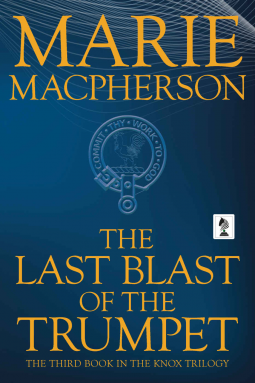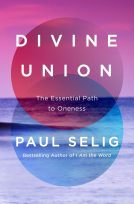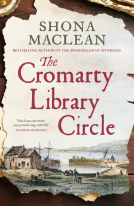
The Last Blast of the Trumpet
John Knox Trilogy Book 3
by Marie Macpherson
This title was previously available on NetGalley and is now archived.
Send NetGalley books directly to your Kindle or Kindle app
1
To read on a Kindle or Kindle app, please add kindle@netgalley.com as an approved email address to receive files in your Amazon account. Click here for step-by-step instructions.
2
Also find your Kindle email address within your Amazon account, and enter it here.
Pub Date Aug 24 2020 | Archive Date May 02 2021
Talking about this book? Use #TheLastBlastoftheTrumpet #NetGalley. More hashtag tips!
Description
16th Century.
Conflict, Chaos and Corruption in Reformation Scotland
He wants to reform Scotland, but his enemies will stop at nothing to prevent him.
Scotland 1559:
Fiery reformer John Knox returns to a Scotland on the brink of civil war. Victorious, he feels confident of his place leading the reform until the charismatic young widow, Mary Queen of Scots returns to claim her throne. She challenges his position and initiates a ferocious battle of wills as they strive to win the hearts and minds of the Scots. But the treachery and jealousy that surrounds them both as they make critical choices in their public and private lives has dangerous consequence that neither of them can imagine.
In this final installment of the trilogy of the fiery reformer John Knox, Macpherson tells the story of a man and a queen at one of the most critical phases of Scottish history.
‘Macpherson has done for Knox what Hilary Mantel did for Cromwell.’ Scottish Field
‘This richly realized portrait of a complex man in extraordinary times is historical fiction at its finest.’ Linda Porter, author of Crown of Thistles; Katherine the Queen, Royal Renegades; Mistresses: Sex and Scandal at the Court of Charles II
‘Marie Macpherson has once again given us a cavalcade of flesh and blood characters living the early days of the Scottish Reformation in a complex tale told with economy and wit.’
S.G. MacLean author of The Seeker Series and Alexander Seaton mysteries
Advance Praise
‘Now’s the time to break from the fetters of Rome, brother. Scotland is on the brink of civil strife. We’re in dire need of a skipper to take the helm…’
Joshua may have only needed a trumpet to bring down the walls of Jericho, but Scotland was no Jericho and John Knox was no Joshua. Knox does have the one thing that Joshua did not though, he has a pulpit. It is here, in the church, before his congregation that Knox will draw the battle lines. He will fire up his congregation until the very demons of Hell will fear to stand against them, to stand against him. Nothing will stop his dream from coming to fruition, and no one will get in his way—not even a young and charismatic queen.
With the tragic death of Francis II, Mary, the former Queen of France, has no choice but to return home. But the kingdom of her birth is a land in crisis. Mary must be careful, for her throne is surrounded by vultures desperate to profit from her ruination, and there are many who would rejoice if she were to fall from grace. None more so than Knox. Mary does not fear Knox, but she does fear the power of his ideas. Scotland needed stability now more than ever, and therefore she is willing to listen to Knox and to find a mutual agreement in which everyone gets a little of what they want.
Knox, however, will not bow down to a papist queen. There is no other way but his way, and it would be wise of Mary to remember that…
The Last Blast of the Trumpet (John Knox Trilogy Book 3) by Marie Macpherson is a Historical Fiction masterpiece.
Macpherson’s careful use of foreshadowing builds suspense throughout this novel, which imbues it with an atmosphere that can only be described as hauntingly beautiful. As Macpherson asks those who are long dead to breathe again, to experience the grandeur and the horrors once again, one cannot help but feel compassion for their plight. To be stabbed 57 times, or to be faced with a corrupted form of justice, and to be condemned for nothing more than the greed and vanity of the prosecutor gives the reader pause to think about how vastly different this time was to our own. This was a violent time in Scottish history, and this novel reflects this volatile age.
Knox is known as the founding father of Protestant Reformation in Scotland, but his story may not be quite what you expect it to be. While Knox waited for the death of the old regime in Scotland, he knowingly perpetuated this seemingly never-ending circle of violence. His God came with a sword. Macpherson has captured his fiery oratory as well as his determination to destroy anything that differed from his beliefs. In this story, as he did in life, Knox deplores the papist rules and teachings. He does nothing to hide his disgust at the grandeur of the Catholic Church. Neither does he have any sympathy for those who refuse to embrace his religion. His inability to compromise is greatly telling of how he saw the world. Anyone who dared to challenge him, such as the Regent, Mary of Guise, and then later her daughter, Mary, Queen of Scots, was deserving of a terrible fate. They deserved to die, which made him an exceedingly unlikeable character. At times he is the antagonist in this tale. His thoughts, his beliefs, make it incredibly difficult for a reader to sympathise with him. He is so blinkered that while he is chasing this ideal religion and this violent God, he fails to see the poverty all around him and when he is confronted with it, he is extremely blasé about these poor starving people, his people, his congregation. One could say that he is an extraordinarily bad shepherd—he lets his flock starve while he chases his corrupted dream of what God was and how one should praise him.
Macpherson has given her readers a realistic, very rounded, characterisation of Knox. When he is not in the pulpit, when he is not arguing theology with people whom he considered inferior because of their beliefs, he is very much a family man. He is a father who adores his children and his wife. I thought the domestic Knox was a much easier man to like than the religious fanatic who seemingly thrived on fire and brimstone. Macpherson shows her readers a gentler side to him, a compassionate side when surrounded by his family. I thought this two-sided Knox worked incredibly well and made him particularly real in the telling.
There are a lot of characters in this story, and there are several points of view, which I thought gives this book a remarkably balanced account of this time in Scottish history. This is not a one-sided account, for this novel encompasses both sides of the argument. The reader bears witness to the dangerous and exceedingly volatile court of Mary, Queen of Scots. Mary is a historical person who has always attracted my sympathies simply because of how terribly she was treated. In this novel, the young and newly widowed Mary is quite literally thrown to the wolves. Her inexperience and her desperate desire to appease the like of Knox, and her desperate attempt to seek a compromise makes her all the more admirable. Her story is told through the eyes of Isabelle Hepburn. Isabelle is a wonderful, brave heroine who witnesses the most terrible injustices and of course the devastating damage that men such as Knox were causing. I thought Isabelle’s depiction was fabulous. Through her eyes, we witness it all.
The historical detailing of this story is staggering. The hours and hours that Macpherson has dedicated to research shines through in the thoroughly enthralling narrative. The historical backdrop of this story is magnificent, there was no doubt in my mind while I read this book as to which century I was in. When Historical Fiction is written like this, then there is no such thing as too much. Macpherson has brought 16th century Scotland back to life.
Although this is book 3 of a trilogy, it stands firmly on its own two feet. I have not read the previous two books, but at no time did I feel that I was adrift. The Last Blast of the Trumpet (John Knox Trilogy Book 3) by Marie Macpherson was a book that I could not wait to get back to. It is utterly enthralling from start to finish, and it is one that is certainly deserving of a place on your bookshelf.
I Highly Recommend.
Review by Mary Anne Yarde
"Scotland 1559: Fiery reformer John Knox returns to a Scotland on the brink of civil war. Victorious, he feels confident of his place leading the reform until the charismatic young widow, Mary Queen of Scots returns to claim her throne. She challenges his position and initiates a ferocious battle of wills as they strive to win the hearts and minds of the Scots. But the treachery and jealousy that surrounds them both as they make critical choices in their public and private lives has dangerous consequence that neither of them can imagine."
I have thoroughly enjoyed the first two books in this series - and was so hoping that the final conclusion would not let the side down. I need not have worried; if anything, Book Three even surpasses the other two.
John Knox is a character you either like or loathe, depending on your view of his determination, passion and conviction. Here is a man of a complex nature, living in a complex period with complex motivations. But then, this entire period of Scottish history was complex - the religious reformation, the political situation - all wrapped up in the diversity of support (or lack of it) for Mary, Queen of Scots.
Ms Macpherson skilfully juggles all these complexities of the political situations with apparent ease. The passionate views and goals of her characters come over as real, flesh-and-blood people, with her writing as passionate as their personal convictions. The author immerses the reader into the upheaval of the period as if we are there, watching on the sidelines as the political and religious battles are set into action by some of the most well known and controversial people who were a part of Scottish history.
A superb ending to an equally as superb trilogy. This is one of those series about history that should be compulsory reading for upper-grade students at school - or anyone interested in Tudor-period history, come to that.
The books are stand alone - but do start at the beginning, it is well worth it!
Very highly recommended
Reviewed for Discovering Diamonds
© Anne Holt
"The Last Blast of the Trumpet" by Marie Macpherson, is the third book in her Knox trilogy. It takes up the story in 1559 when conflict, chaos and corruption are rife in Reformation-era Scotland. John Knox has recently returned home to lead the reform and is confident of success. However, the country is on the brink of civil war and neither side can be sure of who their supporters are. During the dying days of the regent Marie de Guise's reign, Knox seeks the reassurance of his allies that they will support him. But with the young Queen Mary returning to Scotland to claim her throne, he can't be sure which of those who offer their support are true friends and which are wolves in sheep's clothing. And when Mary does arrive, though she is still very young and recently widowed, Knox faces a fierce battle of wills with her from the start, as they compete for the hearts and minds of the Scottish people.
Marie Macpherson writes with an easy style, but includes a wealth of detail. It is possible to step into the lives of the characters in the book and get a sense of what they experienced at the time. The historical content seems well researched and the story she weaves around both people and places is extremely realistic. We learn about Mary and her somewhat haphazard approach to life and loyalty, and we get under Knox's skin as he grapples with delivering the true faith whilst seeking to banish Catholicism and those who would practise it. But we also learn much about Knox the man, the husband and father. At this point, whilst Mary is still young and tireless, Knox is a man in his fifties with a young wife and family and day to day responsibilities that weigh more heavily as the years go by. Does he have the mental and physical strength to keep up the fight and lead those who would follow his thinking? Can Mary gain the acceptance and support she craves, to make her mark on her country and preserve the Catholic faith?
The characterisation in "The Last Blast of the Trumpet" is superb. We are introduced to the Prioress Elizabeth, whose roll as confidante and supporter of Mary de Guise is unfailing. But Elizabeth is also godmother to Knox and carries a dark secret about his early life. We also meet Isobelle, her ward, who she sees as the one to take up the roll of prioress at her passing. Isobelle is in the mould of Elizabeth and is strong and fearless. She remains one of the key supporters of the crown and the Catholic faith throughout. There is also a long cast list of lords and men of high office whose allegiance seems to change by the day, but whose role in fuelling the flames of conflict is unrelenting. Among them is the handsome Bothwell, whose staunch support of the Queen makes him one of her most powerful allies, though others would seek to discredit him.
Those who know their history will be well aware that this story is told against the background of one of the most critical phases in Scottish history. The fact that the fates of both Mary, Queen of Scots and John Knox, rebel reformer, are well documented does nothing to take away any enjoyment from this beautifully crafted novel. The Scottish landscape that Marie Macpherson creates for her characters to inhabit is absolutely believable. "The Last Blast of the Trumpet" lets the reader immerse themselves in a past world that is both fascinating and compelling.
Available Editions
| ISBN | 9781950586530 |
| PRICE | $5.42 (USD) |









